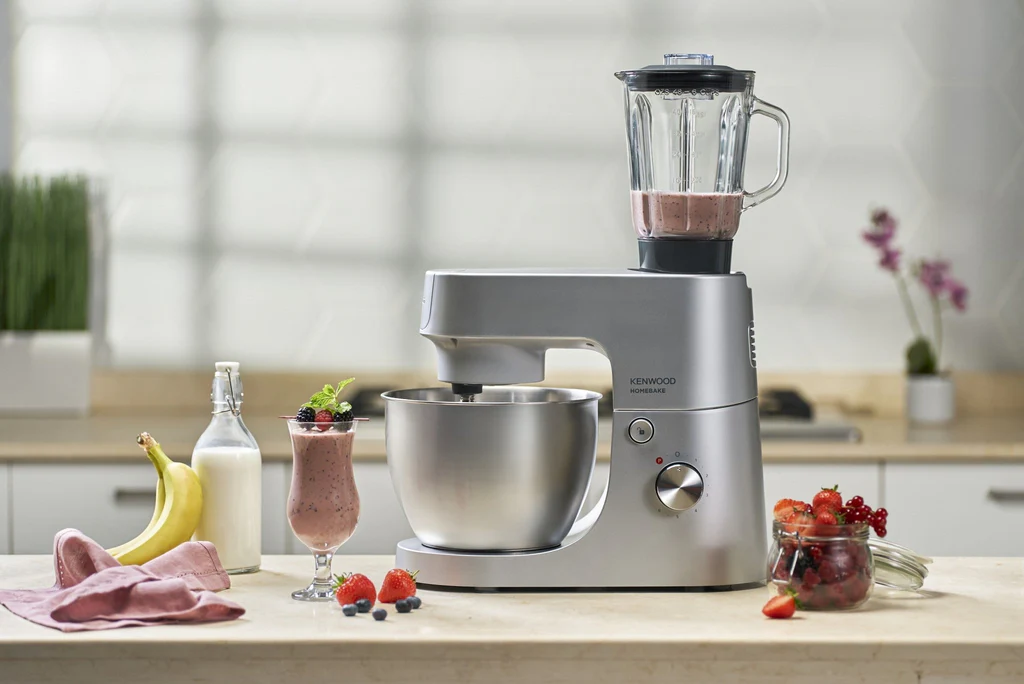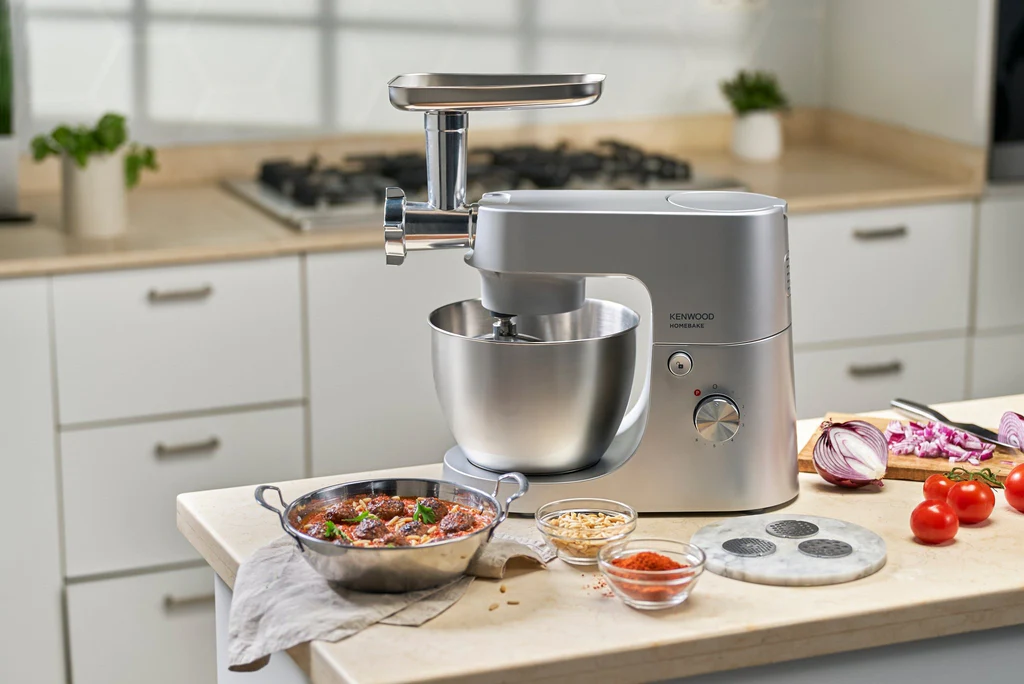Welcome to Stand Mixer Pro, your kitchen confidant! So, you’re on the brink of making one of the most exciting kitchen upgrades imaginable. You can already picture it: silky smooth cake batters, perfectly developed bread dough, and fluffy meringues, all whipped up with effortless grace. But before you click “add to cart,” let’s talk about the single most important feature that isn’t listed on the speed dial: peace of mind. The decision to buy a stand mixer with warranty is the smartest first step you can take, and I’m here to walk you through exactly why it’s a non-negotiable part of this investment.
I remember my first stand mixer. It was a graduation gift, a gleaming cherry red machine that felt like a key to a new world of culinary creation. It was a game-changer. But what I didn’t appreciate then, as a novice baker, was the piece of paper that came with it. That warranty was the silent promise that this beautiful, powerful machine was built to last, and if something went wrong, the company had my back. It’s not just a purchase; it’s a long-term relationship with your kitchen’s new centerpiece.
What Does a Stand Mixer Warranty Actually Protect?
A warranty is more than just a repair policy; it’s a manufacturer’s vote of confidence in their own product. When you buy a stand mixer with warranty, you’re getting a guarantee against defects in materials and workmanship. Think of it like this: you wouldn’t buy a new car without a warranty, right? A stand mixer, with its powerful motor and intricate gears, is the workhorse engine of your kitchen. It deserves the same protection.
Let’s break down what a typical manufacturer’s warranty covers. While policies vary between brands like KitchenAid, Kenwood, or Cuisinart, they generally include:
- The Motor: This is the heart of your machine. If the motor fails due to a manufacturing flaw within the warranty period, it’s typically covered for repair or replacement.
- Gears and Mechanical Parts: The complex system that creates that magical planetary mixing action is protected. Any grinding, seizing, or failure of these internal components is usually included.
- Electrical Components: Faulty wiring, a malfunctioning speed control switch, or other electrical issues are covered.
- Housing Defects: Cracks or failures in the main body of the mixer that aren’t caused by dropping it would fall under the warranty.
However, it’s just as important to know what’s not covered:
- Cosmetic Damage: Scratches, dents, or paint chips from normal use.
- User Error: Damage from dropping the machine, using the wrong speed for a thick dough (which can strain the motor), or improper cleaning.
- Attachments: Often, the included beaters, whisks, and dough hooks have a shorter warranty period (e.g., one year) than the mixer itself.
- Commercial Use: Using a home-use model in a professional bakery will almost always void the warranty.
As renowned pastry chef John Ackerman states, “A powerful motor is only as good as the guarantee behind it. When I advise home bakers, I tell them to look at the warranty first. It tells you everything you need to know about the brand’s belief in their engineering.”
How to Choose the Right Mixer for Your Kitchen
Deciding to buy a stand mixer with warranty is the first step. The next is picking the perfect model. The market is full of options, and it can feel overwhelming. Let’s simplify it by focusing on the questions that truly matter.
What’s the Difference Between Tilt-Head and Bowl-Lift Models?
This is one of the first decisions you’ll make. A tilt-head model allows the head of the mixer to hinge back for easy access to the bowl and beater. A bowl-lift model keeps the head stationary while a lever raises and lowers the bowl.
- Tilt-Head: Great for most home kitchens. They’re slightly smaller, fit better under standard cabinets, and make it easy to add ingredients or scrape the bowl. My first mixer was a tilt-head, and I loved its user-friendly design.
- Bowl-Lift: These are the heavy-duty champions. They offer more stability, typically have larger motors and bowl capacities, and are ideal for those who frequently make large batches of bread or dense cookie dough. If you see yourself kneading two loaves of sourdough at once, a bowl-lift is your best friend.
For a deeper dive, you can [read our complete guide to tilt-head vs. bowl-lift mixers here].
How Much Power Do I Really Need?
Mixer power is measured in watts, but that number can be misleading. A 325-watt motor from a premium brand like KitchenAid, which uses an efficient direct-drive transmission, can often outperform a 600-watt motor from a lesser-known brand. Instead of just watts, consider the motor type (DC motors are generally quieter and more efficient) and look at reviews that specifically mention performance with heavy doughs. Don’t pay for a V8 engine when you only need a reliable four-cylinder.
What Bowl Size is Right for Me?
This depends entirely on what you plan to make.
- 4.5-5 Quarts: The sweet spot for most families. This size can handle a batch of up to 9 dozen cookies, a single cake recipe, or one loaf of bread with ease.
- 6-8 Quarts: Perfect for serious bakers, large families, or small business owners. If you’re doubling and tripling recipes for bake sales or holiday gatherings, go big.
|
Our Picks for the Best Stand Mixer in 2025
As an Amazon Associate, we earn from qualifying purchases.
|
||
| Num | Product | Action |
|---|---|---|
| 1 | 6-in-1 Multifunctional Stand Mixer, 5.3Qt 660W, 6-Speed Tilt-head, Electric Kitchen Mixer with Stainless Steel Bowl,Meat Grinder, Juice Blender (Black) |

|
| 2 | COOKLEE 6-IN-1 Stand Mixer, 8.5 Qt. Multifunctional Electric Kitchen Mixer with Beater, Whisk, Dough Hook, Meat Grinder and Other Accessories for Most Home Cooks, SM-1507BM, Silvery |

|
| 3 | KitchenAid 7 Quart Bowl-Lift Stand Mixer |

|
| 4 | Instant Pot Stand Mixer Pro,600W 10-Speed Electric Mixer with Digital Interface,7.4-Qt Stainless Steel Bowl,From the Makers of Instant Pot,Dishwasher Safe Whisk,Dough Hook and Mixing Paddle,Silver |

|
| 5 | Kitchen in the box Stand Mixer,3.2Qt Small Electric Food Mixer,6 Speeds Portable Lightweight Kitchen Mixer for Daily Use with Egg Whisk,Dough Hook,Flat Beater (Blue) |

|
| 6 | Stand Mixer | Powerful 660W Motor | Large 6.5 Qt. Bowl | 6-Speed Control | Dishwasher-Safe Attachments | Tilt-Head Design | Perfect for Home Bakers (Red) |

|
| 7 | DASH Tilt-Head 3.5qt Stand Mixer 12 Speeds with Paddle, Dough Hook, and Whisk Attaachments - Cream |

|
| 8 | KitchenAid Artisan Series 5 Quart Tilt Head Stand Mixer with Pouring Shield KSM150PS, Blue Velvet |

|
| 9 | KitchenAid Classic Series 4.5 Quart Tilt-Head Stand Mixer K45SS, White |

|
| 10 | Kitchen in the box Stand Mixer, 900W 8.5QT Kitchen Electric Mixer, 6-Speed Large Capacity Food Mixer for Home Cooks with Egg Whisk, Dough Hook & Flat Beater (Black) |

|
Unboxing Your New Best Friend: A Quick Start Guide
You did it! You decided to buy a stand mixer with warranty, you picked the perfect model, and it has arrived. The excitement is real. Here’s how to go from box to baking in minutes.
- Find a Permanent Home: These machines are heavy. Find a dedicated spot on your counter where it can live. You’ll use it more if it’s always accessible.
- Wash Before Use: Wash the bowl and all attachments (flat beater, dough hook, wire whisk) in warm, soapy water and dry them thoroughly.
- The Dime Test: Here’s a pro tip. To ensure your beater is at the right height, drop a dime into the empty bowl. Turn the mixer on low. The flat beater should gently push the dime around the bowl without aggressively hitting it. You can adjust the beater height with a small screw where the head connects—check your manual for specifics.
- Start Low, Go Slow: Always start your mixer on the lowest speed (“Stir”) to incorporate ingredients without showering your kitchen in flour. Gradually increase the speed as needed.
Your Attachment Toolkit: The Big Three
Most stand mixers come with three essential tools. Understanding them is key to unlocking your mixer’s potential.
- Flat Beater (or Paddle): Your go-to for most tasks. Use it for creaming butter and sugar, mixing cake and cookie batters, and even shredding cooked chicken.
- Wire Whisk (or Whip): This is for incorporating air. Use it for whipping egg whites into stiff peaks for meringues, making airy whipped cream, or creating light and fluffy frostings. Important note: Never use the whisk on thick batters; you’ll bend the wires.
- Dough Hook: This magical C-shaped or spiral hook mimics the motion of hand-kneading. It’s essential for developing gluten in bread, pizza, and pasta dough, saving your arms a serious workout.
As you become more advanced, you can explore dozens of other attachments, from pasta rollers to meat grinders, turning your mixer into a true kitchen powerhouse. [Explore our reviews of the best stand mixer attachments].
Frequently Asked Questions (FAQ)
Q1: Is an extended warranty worth it when I buy a stand mixer with warranty from the manufacturer?
An extended warranty can be beneficial if you’re a very heavy user or want extra protection against accidental damage, which manufacturer warranties don’t cover. For most home bakers, the standard 1 to 5-year manufacturer warranty is sufficient, especially from reputable brands.
Q2: What is the most common action that voids a stand mixer’s warranty?
Using the machine for commercial purposes is the fastest way to void a warranty. Other common mistakes include using a dishwasher on non-dishwasher-safe parts (like coated beaters), or consistently overloading the motor with excessively large or stiff doughs.
Q3: How do I register my warranty after my purchase?
Most manufacturers have a simple online registration form on their website. You’ll typically need the model number, serial number (usually found on the mixer’s base), and your proof of purchase. Do this as soon as you unbox your mixer!
Q4: Can a stand mixer with warranty handle all types of dough?
Yes, a quality stand mixer is designed to handle everything from sticky brioche to stiff whole wheat dough. The key is to use the correct speed (usually speed 2 for kneading) and not to exceed the capacity recommended in your user manual.
Q5: If I need a repair, how does the warranty process work?
Generally, you’ll contact the manufacturer’s customer service. They will guide you through troubleshooting steps first. If a repair is needed, they will provide instructions on where to send the unit or direct you to an authorized service center. Always keep your original receipt as proof of purchase date.
The Final Mix
A stand mixer is more than a kitchen appliance; it’s an investment in your creativity, your family traditions, and the joy of making something wonderful from scratch. It’s a partner that will be with you through countless birthday cakes, holiday cookies, and weekend pizza nights. By choosing to buy a stand mixer with warranty, you are ensuring that this partnership starts on a foundation of trust and is protected for years to come. Now, go forth and bake with confidence!
Have you recently bought a stand mixer? Share your experience or ask any questions in the comments below! We’d love to hear from you.